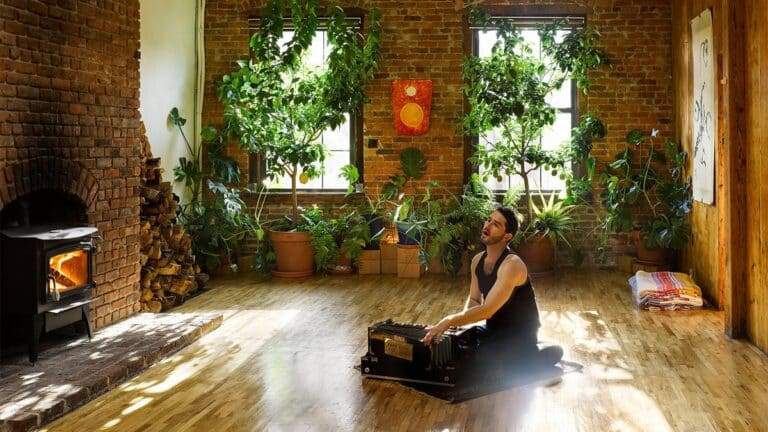This article explores the connection between IKEA, a global leader in furniture manufacturing, and the Bauhaus School, an influential art and design institution. It covers the history and principles of the Bauhaus School, IKEA’s growth and design philosophy, and how Bauhaus ideas shaped IKEA’s products. Additionally, it examines IKEA’s global impact, including its humanitarian efforts, and provides a critical perspective on the relationship. The article concludes with a FAQ section and a summary table of key points.
The Bauhaus School: Origins and Principles
The Bauhaus School, founded in 1919 in Weimar, Germany, aimed to blend art, craft, and technology. It later moved to Dessau and Berlin before closing in 1933 due to political pressures. The school emphasized simplicity, functionality, and the use of primary colors (red, blue, yellow) in designs. Its approach combined craftsmanship with mass production, making art accessible and practical for everyday use.
The Bauhaus influence extended beyond Germany, inspiring global design movements. In New York, its ideas contributed to the establishment of the Museum of Modern Art (MoMA), which showcases contemporary design. The school’s legacy lives on in the Bauhaus Museum in Berlin, where artifacts from its various phases are displayed.
“The Bauhaus sought to unify art, craft, and technology, creating designs that were both functional and aesthetically pleasing.”
Source: Bauhaus-Archiv Berlin (https://www.bauhaus.de/en/)

IKEA: A Global Furniture Leader
Founded in Sweden in 1943, IKEA grew from a small business into a global brand. It expanded to Saudi Arabia, opening branches in Jeddah and Riyadh, which evolved from modest showrooms into large retail spaces. Today, IKEA operates in numerous countries, serving millions of customers annually.
IKEA’s product catalog includes around 9,500 items, each named rather than numbered, making them memorable for customers. The company uses wood extensively, ranking among the top global consumers of this resource. It also maintains competitive pricing, reducing costs by approximately 3% annually while prioritizing quality materials.
| IKEA Key Facts | Details |
|---|---|
| Founded | 1943, Sweden |
| Global Visitors (2012) | ~960 million |
| Product Catalog | ~9,500 items |
| Wood Usage | Among top 3 globally (1% of world supply) |
Bauhaus Influence on IKEA’s Designs
IKEA’s furniture reflects the Bauhaus principle of simplicity. The company avoids excessive decoration, focusing on clean lines and functional designs. This approach mirrors the Bauhaus goal of creating affordable, practical products for everyday use. For example, IKEA’s flat-pack furniture, which customers assemble at home, aligns with Bauhaus ideas of efficient production and accessibility.
The Bauhaus emphasis on combining craftsmanship with industrial techniques also resonates with IKEA’s manufacturing process. By adopting these principles, IKEA has made stylish, functional furniture widely available, transforming the global furniture industry.

IKEA’s Humanitarian Efforts
Beyond furniture, IKEA has engaged in social initiatives. In response to the Syrian refugee crisis, the company developed mobile homes that can be assembled without tools. These shelters, deployed in regions like Iraq and Lebanon, provided practical housing solutions for displaced families.
“IKEA’s refugee shelters are designed for easy assembly and durability, offering a dignified solution for those in need.”
Source: UNHCR (https://www.unhcr.org/innovation/ikea-foundation/)
This initiative highlights IKEA’s commitment to addressing global challenges, extending its influence beyond retail.
ArchUp Opinion: Analysis and Critique
IKEA’s adoption of Bauhaus principles has been a key factor in its success, allowing it to offer affordable, functional furniture to a global market. The simplicity and efficiency of its designs make them appealing and practical. However, this approach has limitations. The focus on mass production can sometimes lead to products that lack durability compared to handcrafted furniture. Additionally, IKEA’s heavy reliance on wood raises environmental concerns, despite its efforts to source sustainable materials.
The Bauhaus influence, while effective, may also limit design diversity. IKEA’s products often follow a uniform aesthetic, which may not appeal to customers seeking unique or culturally specific designs. A more varied approach could enhance its offerings, especially in markets like the Middle East, where traditional design elements are valued.
Overall, IKEA’s use of Bauhaus principles is a strength, but balancing simplicity with innovation and sustainability will be crucial for its future growth.

Frequently Asked Questions (FAQ)
1. What is the Bauhaus School?
The Bauhaus was an art and design school founded in 1919 in Germany, known for its focus on simplicity, functionality, and combining art with industrial production.
2. How did the Bauhaus influence IKEA?
IKEA adopted the Bauhaus emphasis on simple, functional designs, creating affordable furniture with clean lines and minimal decoration.
3. What are IKEA’s mobile homes for refugees?
IKEA designed portable shelters for Syrian refugees, which are easy to assemble and durable, used in regions like Iraq and Lebanon.
4. Why does IKEA name its products instead of numbering them?
Naming products makes them more memorable and distinctive, helping customers connect with the brand.
5. How does IKEA keep its prices low?
IKEA reduces prices by about 3% annually through efficient production, flat-pack designs, and economies of scale.
Summary Table
| Topic | Key Points |
|---|---|
| Bauhaus School | Founded in 1919, focused on simplicity and functionality, influenced global design, inspired MoMA. |
| IKEA Overview | Founded in 1943, global brand, ~960M visitors in 2012, uses 1% of world’s wood supply. |
| Bauhaus Influence | IKEA’s designs reflect Bauhaus simplicity, flat-pack furniture aligns with efficient production. |
| Humanitarian Efforts | Developed mobile homes for Syrian refugees, easy to assemble, used in crisis regions. |
| ArchUp Critique | Bauhaus influence drives success but limits durability and design diversity; sustainability concerns remain. |
This article highlights the significant impact of the Bauhaus School on IKEA’s design philosophy and global success, while acknowledging areas for improvement in sustainability and design innovation.







